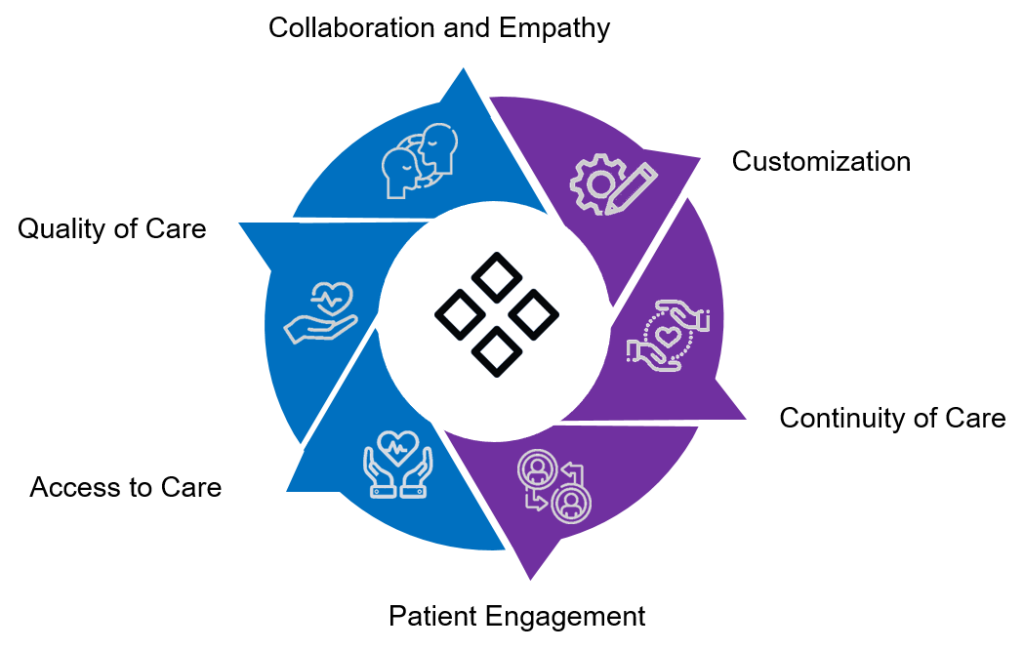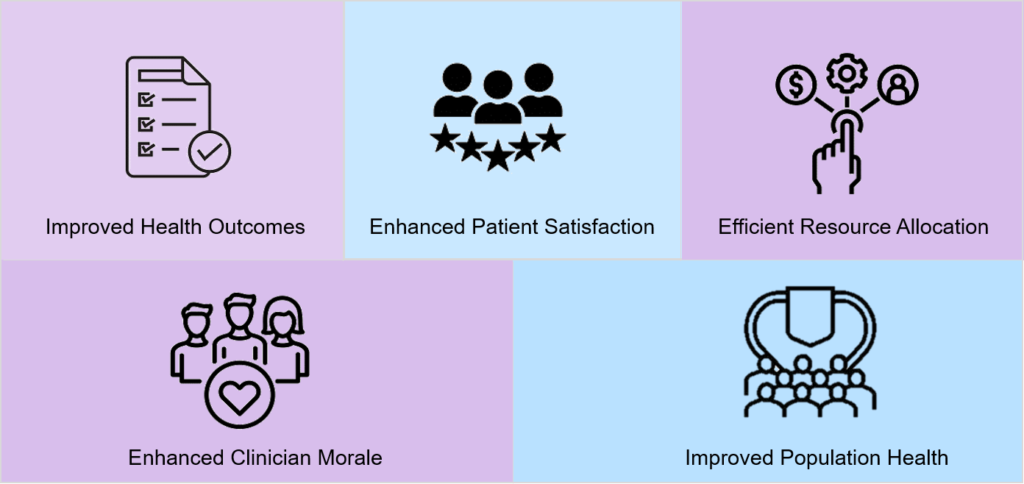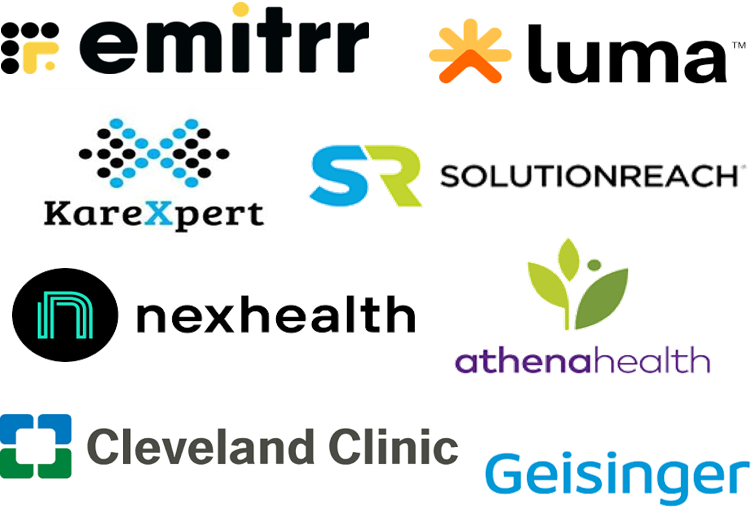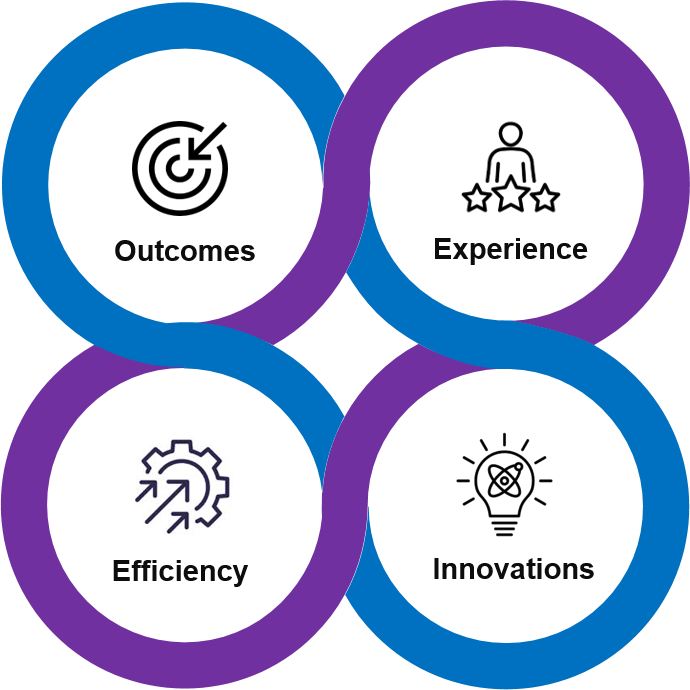Redefining Healthcare: A Holistic Approach to Patient-Centric Care
The concept of patient-centric care has become a fundamental principle in today’s healthcare landscape. Both multinational pharmaceutical businesses and local grassroots health centers understand the importance of prioritizing patients’ needs to meet evolving customer expectations. However, asserting a commitment to real patient-centric is not enough; it calls for a serious cultural transformation within the organization, placing the patient at the core of all care processes and decisions. This article undertakes a comprehensive examination of what patient-centered health care means by looking at its definition, evolution, key components, advantages, methods of implementation, platforms & tools, and implications for medical systems.
Defining Patient-Centric Care
The patient-centric approach is the first priority in the receipt of health care. It forms a strong bond between patients and their healthcare providers by recognizing the whole picture of health and well-being. It refers to an approach in which patients participate in the decision-making process for their own medical care by ensuring that all treatment plans provided are tailored toward individual conditions. Patient-centeredness is based on a bio-psycho-social perspective rather than the conventional model where only biomedical elements are taken into account, thus recognizing that the physical, psychological, and social components interact with one another during illness or wellness.
Evolution of Patient-Centric Care
The development of patient-centered treatment can be viewed through historical changes in healthcare paradigms, which are shaped by the development of technology, new treatment models, and changing social expectations. In its early stages, health systems used an authoritarian approach where doctors made unilateral decisions without much input from patients. However, movements supporting patient empowerment and influence began to take root, emphasizing shared decision-making and communication with patients. The concept of patient-centered care has since expanded beyond these factors to include access to information, transparency, and continuity of care. It symbolizes a shift from the traditional medical practice that considers patients as passive treatment beneficiaries but focuses on working with them as partners throughout their medical course.
Key Components of Patient-Centric Care

Figure 1: Key Components of Patient-Centric Care
- Collaboration and Empathy: Patient-centric care promotes a sound partnership between patients and healthcare providers based on mutual respect, empathy, and shared decision-making; thus, it entails listening actively to patients’ concerns and wishes and integrating these into decision-making
- Customization: Treatment plans are designed specifically for each patient according to their unique requirements, preferences, and the social determinants of health that facilitate personalized healthcare delivery; this may include socio-economic status, cultural background, or personal beliefs as issues to consider in designing treatment plans
- Continuity of Care: To ensure continuous care, patients require coordinated healthcare services seamlessly across several settings. The objectives are to foster communication and information sharing among various health professionals involved in the patient’s care and ensure smooth transfers from one level of service provision to another.
- Patient Engagement: Patients actively participate in their journey towards recovery by being supported in making informed choices and participating in treatment planning; this involves providing access to medical information needed by patients, along with tools for decision-making and self-management resources that can help them play an active role in managing their health.
- Access to Care: Patient-centric healthcare emphasizes quick access to preventive, acute, and chronic care services while reducing barriers to care and enhancing health outcomes. Among such measures, strategies can be implemented that can enhance access to healthcare services, such as extending clinic hours, offering telemedicine appointments, or providing transportation support for patients with limited mobility.
- Quality of Care: Healthcare providers follow evidence-based practices that prioritize safety, efficacy, and patient satisfaction. To this end, they continuously monitor and assess the quality of care provided, identifying areas needing improvement and implementing measures to improve patient experience and enhance overall health status.
Benefits of the Patient-Centric Approach
Adopting a patient-centric approach yields numerous advantages for both patients and healthcare organizations:
- Improved Health Outcomes: Active patient engagement results in better treatment adherence, reduced re-hospitalizations, and overall improved health outcomes. Patients who take an active role in their self-care are more likely to have improved health outcomes than patients who are passive recipients of medical treatment.
- Enhanced Patient Satisfaction: Empowered patients lead to higher satisfaction levels, thereby increasing loyalty and retention. As a partner in their care, patients appreciate being treated as such by healthcare providers’ preference for service.

Figure 2: Benefits of the Patient-Centric Approach
- Efficient Resource Allocation: By focusing on the needs and priorities of every patient under care, healthcare organizations can maximize the use of limited resources while reducing waste. Patient-centered strategies warrant an efficient use of resources, which reduces the cost of medical services and thus improves the organization’s financial sustainability.
- Enhanced Clinician Morale: Collaborative decision-making and patient-centered treatment models bring high levels of job satisfaction and satisfaction among professionals in the field. Physicians who create individualized treatment plans with patients find that their work is more rewarding and meaningful.
- Improved Population Health: People-centered care can improve the health conditions of populations by addressing the root causes of disease and promoting prevention. By enabling patients to take responsibility for their own well-being, people-focused care may reduce the prevalence of non-communicable diseases and enhance community well-being.
Key Challenges in Implementing a Patient-Centric Approach
Implementing a patient-centric healthcare approach involves multiple challenges that need to be addressed to achieve efficient treatment.
- Time-Consuming and Expensive: A patient-centric approach can be time-consuming and expensive. However, a more severe challenge is changing the existing, established mindset and culture. Transition to patient-centered care can place a financial burden on healthcare organizations.
- Adaptability Issues: Adopting a patient approach, in turn, leads to the use of new technologies, which means existing healthcare ecosystems and IT infrastructures should be able to support new embedded solutions, but this is not always the case
- Data Sharing and Privacy Issues: The biggest challenges in adopting a patient-centered approach are the sharing of patient information and privacy issues
- Varied Patient Population: Heterogeneity of the patient population can lead to reduced efficiency in offering patient-centric solutions
Strategies for Implementing Patient-Centric Care
Implementing patient-centered care needs a multifaceted approach that includes organizational culture, operational processes, and technological infrastructure:
- Aligning Organizational Goals: Combining mission, vision, and values with patience to create a patient culture. This requires fostering an organization that emphasizes its support system in relation to patient needs.
- Fostering Collaborative Care Delivery: Facilitating communication and collaboration between different healthcare professionals leads to holistic care. For example, multidisciplinary care teams can be created with doctors, nurses, social workers, and other healthcare stakeholders.

Figure 3: Strategies for Implementing Patient-Centric Care
- Empowering Patients: Give patients access to health information sources, decision-making tools, and self-management tools so they can actively participate in their own well-being. Such programs may include educating patients on diseases through group work and electronic resources.
- Enhancing Access and Continuity: Measures are introduced to improve the availability of care services, facilitate the transition from one form of care to another, and ensure continuity in different types of care environments. This may be done using EHR systems, care coordination software, and telemedicine services.
- Embracing Technology: Using digital health solutions, telemedicine, and electronic health records to improve communication, accessibility, and treatment efficiency. This may include implementing telehealth platforms, mobile health apps, and remote monitoring devices to facilitate remote patient monitoring and virtual consultations.
- Continuous Quality Improvement: Based on patients’ own advice, mechanisms are created to collect patient feedback, measure outcomes, and improve treatment processes. This may include conducting patient satisfaction surveys, monitoring clinical outcomes, and using data analytics to identify areas for improvement.
Examples of Patient Centricity in Healthcare Organizations
When discussing patient-centered initiatives, it is important to highlight real-world examples where innovative software solutions have played a key role in transforming healthcare. For example, Geisinger’s ProvenHealth Navigator program is a beacon of patient-centered care. This initiative stands out for its holistic approach, which addresses medical needs and the social determinants of health. The integration of specialized software platforms that facilitate seamless coordination between healthcare providers and social services is noteworthy. Likewise, Cleveland Clinic’s MyChart patient portal is an example of the power of technology to empower patients. This intuitive platform gives people secure access to their patient information, appointments, and interactions with healthcare professionals.
Software to Help Build Patient Centricity
The revolutionary healthcare software systems are extremely patient-friendly, with cutting-edge technology and innovative ways of doing things. Among other factors, this transformation is driven by leading software platforms, including Emitrr, Luma Health, Solutionreach, NexHealth, AthenaOne, and KareXpert. Curogram is one of the prominent providers of patient-centric communications and practice management software that streamlines and improves health communications.

Figure 4: Key Players in Patient-Centric Care
These platforms feature advanced functionalities such as telehealth/telemedicine applications, AI for predictive data analysis, image-based diagnostics, and digital therapeutics programs based on smartphones and wearable techs to facilitate personalized care plans. The significance of patient-centric mobile apps in the healthcare industry has been increasing at a rapid pace, driven by several factors, including patient-centered portals with personalized services, online appointment scheduling, and medication reminders coupled with teleconsultations that ensure a holistic experience.
Future trends will include less and less human-based approaches to patients but more AI integration, adoption of cloud technology and machine learning, tightening up hospital cybersecurity measures, strategic planning, advanced analytics, integrated telemedicine options, and IoT devices that work harmoniously. They aim to improve the outcomes for patients and processes in the healthcare sector while at the same time enhancing care coordination and redefining how healthcare is delivered to a patient-centric model. AthenaOne and KareXpert are examples of platforms that display this transformation whereby AthenaOne integrates electronic health record management with medical billing through its unified cloud-based platform for efficiency. At the same time, KareXpert’s user-friendly interface and integrated solutions prioritize patient experiences to achieve better outcomes and satisfaction. These software applications illustrate how the amalgamation of science and compassion will drive a future where every aspect of health care will concentrate on individual needs.

Figure 5: Impact on Healthcare Systems
Patient-centric healthcare has transformative effects on healthcare systems, including:
- Improved Patient Outcomes: Active patients receiving individualized care have better health outcomes. As a result, there will be low healthcare disparities and enhanced population health. Care plans should be personalized to cater to patients’ specific needs and preferences, which will help improve their health outcomes and reduce the occurrence of chronic diseases.
- Enhanced Patient Experience: Improved patient satisfaction ratings, higher levels of loyalty, and trust in healthcare providers and organizations are some benefits derived from the patient-centered care models. It means much for patients when they are treated like partners in their own care and when healthcare providers respect their choices and values.
- Operational Efficiency: Strategies that align with a patient-centered approach enhance resource utilization; therefore, operational efficiency is improved by removing inefficiencies within the system through waste elimination. Healthcare organizations can improve organizational efficiency by optimizing care processes while minimizing unnecessary medical procedures, resulting in lower costs.
- Continuous Learning and Innovation: A patient-centered culture of learning, innovation, and adaptation in healthcare facilities leads to continuous improvement to meet the changing needs of patients and consumers. By asking patients for feedback and constantly monitoring and evaluating care processes, healthcare organizations can recognize areas for improvement and implement innovative solutions to improve patient care.
Conclusion
Patient-centered care is a healthcare revolution that supports individualized, holistic, and team-oriented approaches to health. Effective implementation of this approach allows organizations to obtain better results for both patients and providers as they prioritize patients’ needs, preferences, and values in their healing journeys. To begin this journey of being patient-centric, organizational goals must be aligned, promoting shared care, empowering patients, improving access and continuity, embracing technology, and prioritizing continuous quality improvement, among other things.
Revolutionary healthcare software prioritizes patient needs with advanced technology. Patient-centric mobile apps feature personalized portals, online scheduling, and teleconsultations. Future trends involve AI integration, cloud adoption, cybersecurity, advanced analytics, and IoT.
In essence, patient-centered care is not just a strategic initiative but a fundamental ethos to embody throughout all healthcare delivery aspects. Healthcare organizations can focus on patients as their core principle to see a future where every individual receives tailored, compassionate, high-quality care, leading to healthier individuals, stronger communities, and more resilient health systems overall.



